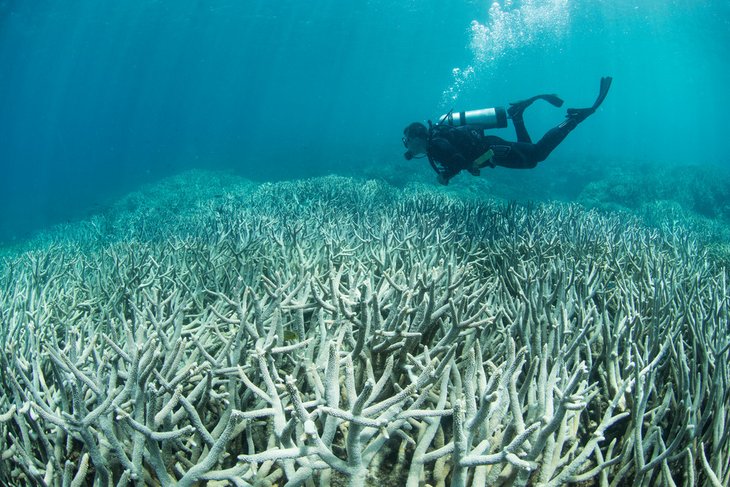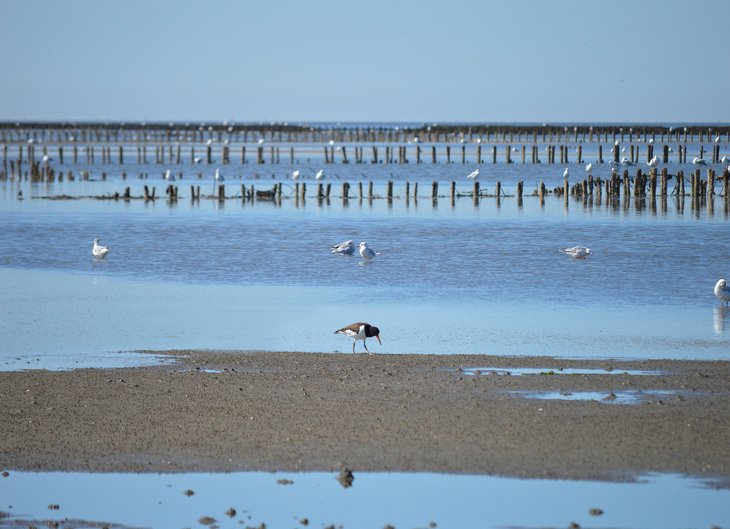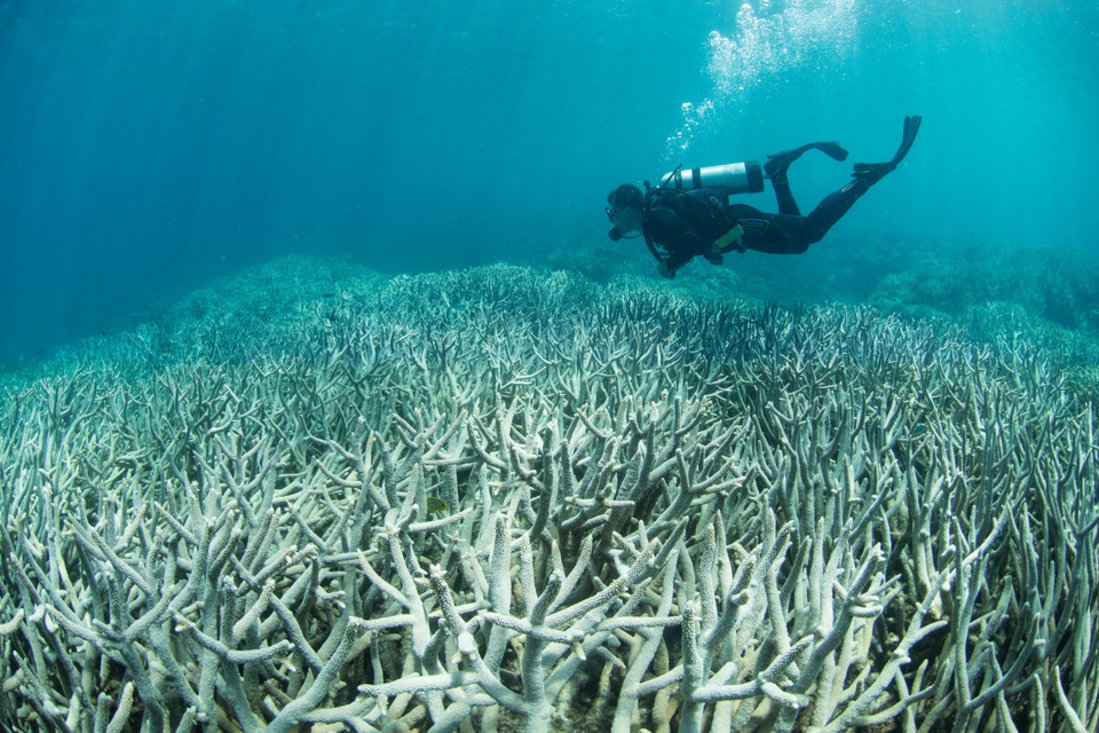Ecosystems are adaptable. They constantly change internally, which is crucial for their survival and enhances their resilience. This allows them to withstand, to a certain extent, the pressure from climate change and human interventions. However, if this threshold is surpassed, the structure of the ecosystems can suddenly and unexpectedly change drastically. The result: The community can no longer fulfill many of its functions, and this usually leads to significant, nearly irreparable damage. Experts refer to the crossing of these thresholds as an ecological tipping point.
Prominent examples include the collapse of fish populations after they have been overfished for too long. Or the formation of harmful algal blooms and oxygen-depleted zones in coastal waters after too many nutrients have been introduced from land. Or the heat-induced death of tropical coral reefs.
To take one example further: Where corals disappear, the reef communities no longer have a basis for existence. Other organisms, mostly algae, colonise them. However, their diversity and functions are usually completely different to those of the species-rich coral reefs. As a result, water quality often declines and the new algae-dominated communities pose a potential threat to other marine organisms and human health.
Recognising early warning signs
How quickly an ecosystem approaches such a tipping point depends on its resilience. This in turn is fuelled by three factors:
- The biodiversity of the community;
- The number of species that fulfill similar ecological functions (if one species dies out, another may take over its role).
- The complementarity between species, meaning the differences in how species perform these tasks.
By monitoring these three factors through long-term observations, experts can deduce both the resilience of an ecosystem and early warning signs of reaching a tipping point.
Based on these insights, protective measures can be developed to reduce human-induced pressure on the ecosystem, strengthen its resilience, and hopefully prevent the collapse of its native community.
The example of the Wadden Sea shows how comprehensively ecosystems can recover when humans reduce their interventions. Since large parts of the coastal sea were declared a national park more than 30 years ago, the natural habitats and biodiversity of the Wadden Sea have been recovering. Salt marshes are no longer grazed, mussel fishing has been stopped and the dumping of waste and pollutants into the North Sea has been halted or reduced. For the good of nature.
But not only. The coastal population also benefits from the measures: according to calculations, the national park generates an annual regional tourism value added of 89 million euros. In terms of figures, it creates and secures around 4,700 jobs.
- Nationalpark Wattenmeer (2023). Erfolge - 14. Nationalpark als Wirtschaftsfaktor. www.nationalpark-wattenmeer.de/wissensbeitrag/erfolge/










